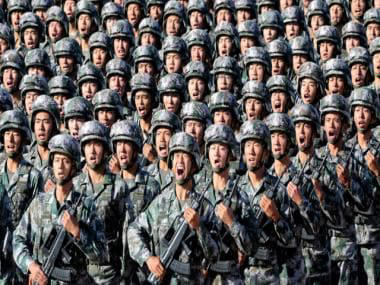Ajeyo Basu

With neither side restrained by deterrence or concerned about escalation, a Chinese military think-tank simulated a “total war” with the US in which both sides used their complete and unfettered military capabilities to advance on the other.
This was done to see how a highly political and strategic situation might affect how well People’s Liberation Army Navy (PLAN) warships would perform individually as they faced multiple simultaneous threats and had to use or overuse their anti-ship, anti-land, and electronic warfare capabilities.
China’s PLA Navy suffered terrible losses during the war game, with its destroyers losing more than half of their fighting capacity. The document on the wargame simulation by the PLA’s Unit 91404 at Qinhuangdao, however, does not imply that the Chinese leadership is actively considering such a conflict or that the Communist Party of China (CPC) is reflecting such an attitude.
Instead, it uses a tried-and-true military tactic to test the boundaries of its weaponry, defence technologies, and warfighting doctrine: planning for the worst-case situation.
The majority of militaries around the world train for such apocalyptic scenarios where they underestimate the enemy. The Chinese Journal of Ship Research, a peer-reviewed journal, published the study that was written by Fang Canxin and Guo Xinwang.
According to the experts, the end-of-the-world battle, designated as “Z,” will “be a clash of strategic willpower (where) the regional conflict escalates to a total war.”
The South China Sea (SCS), where Beijing disputes maritime boundaries with the Philippines, Indonesia, and Vietnam, is therefore included in a war between the US and China that extends beyond the latter’s invasion of Taiwan.
In such a situation, a Chinese destroyer would come under fire from almost a dozen missiles and three torpedoes. The fleet of the Blue Alliance, which had Arleigh Burke carriers, produced jamming noises that were over 30 times more powerful than the signal that the ship utilised for communication.
Additionally, it cut the radar range of Chinese warships by 60%. However, it doesn’t mention any nations or navy.
The paper lists four potential outcomes. The Chinese ship only encounters one or two missiles of a single type and one torpedo when the Blue Alliance does not participate in the battle with firepower or targeting information.
As a result, the US is not standing up for Taiwan or Japan, completely opening the door for the PLAN. Only one anti-ship missile attack from other enemy vessels is possible for it.
The Chinese destroyer and the opposing ship engage in a “two-way” exchange of fire when the Blue Alliance supplies targetting and reconnaissance data. Here, two waves of five to seven different types of missiles and two torpedoes are launched by each ship.
Three torpedoes and nine to eleven different missiles are traded between the two ships in one wave when the Blue Alliance immediately engages in combat.
In order to increase the likelihood of hitting an enemy warship, navies and planes typically fire missiles in volleys of at least two. When crews and pilots launch two missiles at the same aircraft in tandem during anti-air warfare, they are using the same approach.
The rain of missiles is indeed terrible when the conflict intensifies and “local wars spread to full-scale wars,” though. Three torpedoes and more than 11 different types of missiles are exchanged in waves in different directions.
Fang’s team claims that these extraordinary circumstances significantly limited the Chinese warship’s combat capabilities.
For instance, the destroyer would lose approximately a third of its air defence capabilities right once. Only half of the surface-to-air missiles were able to connect with their intended targets.
The whole destruction of the war, which would have killed millions while destroying cities, transportation systems, communication networks, and industries, is far more devastating than the destiny of a warship.
If nuclear weapons are used, the conflict may irreparably harm ecosystems and agriculture, resulting in a lack of food, genetic mutations, an increase in the incidence of cancer, and other diseases.
No comments:
Post a Comment